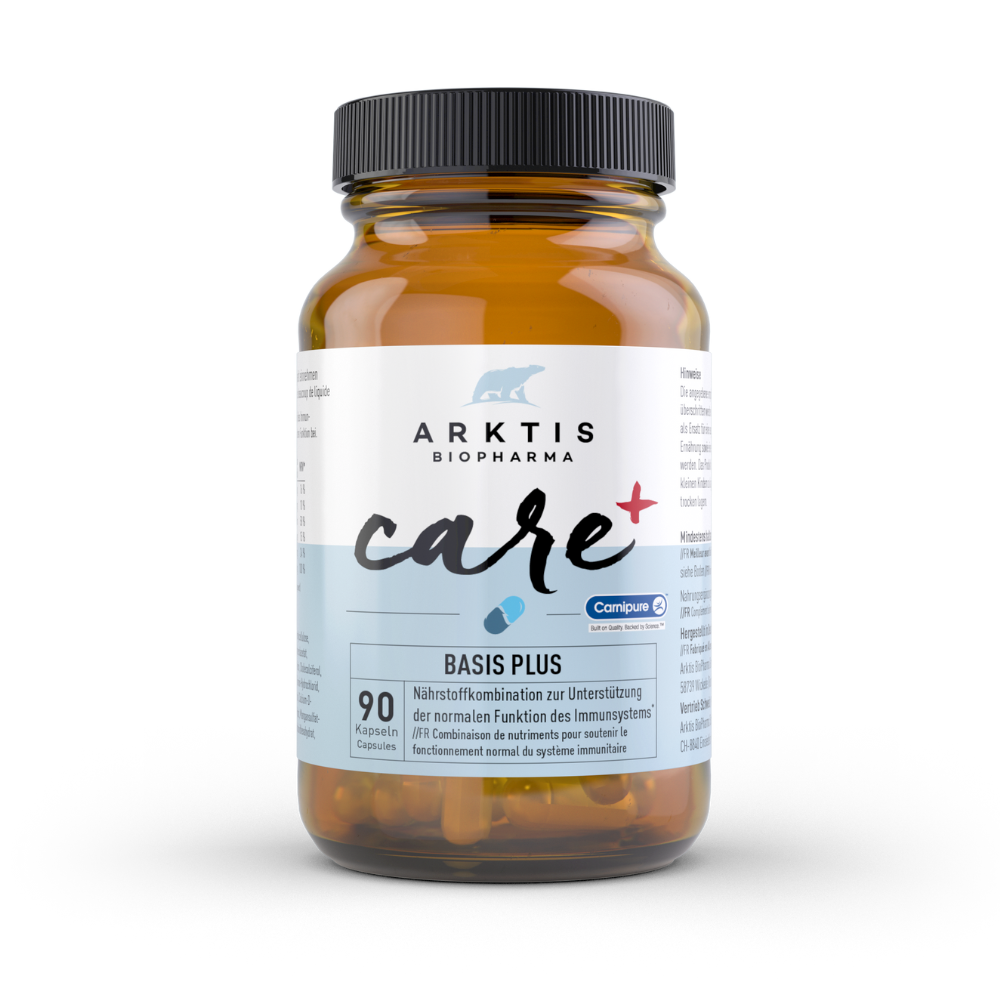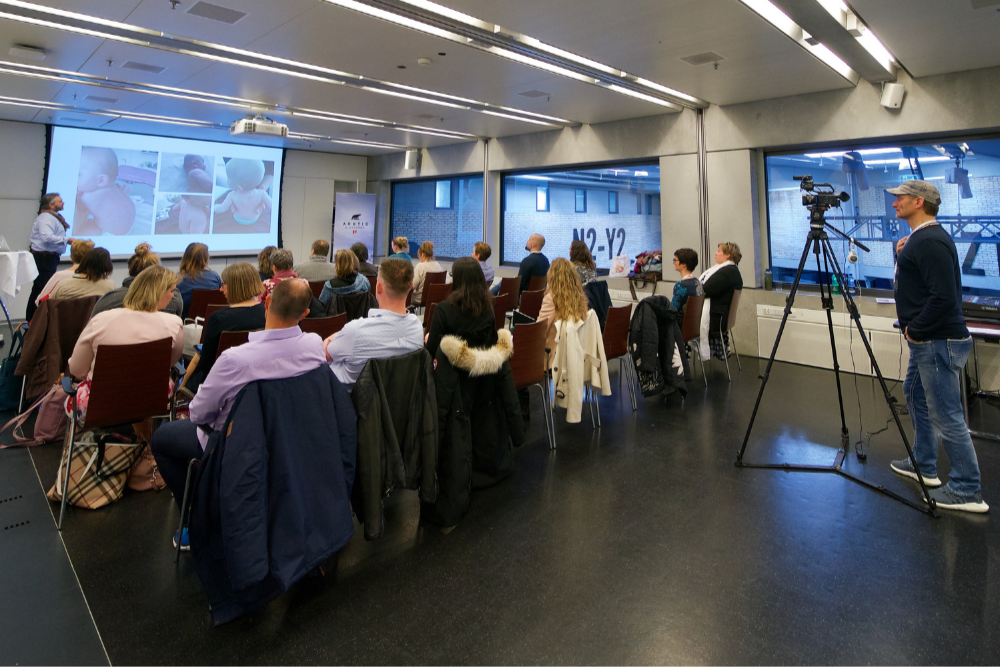Gluten intolerance has been on everyone's lips for some time now. Some people take the issue very seriously and try to ban gluten from their lives, while others laugh at it and make fun of this "modern hype". But what is the truth behind the nasty accusations about gluten? How do you eat? Are you a gluten fan or an opponent? I would like to try to educate you a little and explain the differences between intolerances and the autoimmune disease coeliac disease.
Coeliac disease and gluten intolerance: what are they and what are the differences?
Some people equate gluten intolerance with coeliac disease, but this is not entirely medically correct. Coeliac disease, also known as sprue, is an autoimmune disease of the small intestine. People who suffer from gluten intolerance react to gluten, which is found in grains such as wheat, spelt, barley, rye and green spelt. An intolerance to gluten manifests itself in symptoms such as digestive problems, tiredness, depressive moods and others. These symptoms improve as soon as you consistently remove gluten from your diet. If you do this over a sufficiently long period of time and get your bowels back in order, it is possible that you will be able to tolerate foods containing gluten again in the future. It all depends on the quantity and frequency.
However, people who are diagnosed with coeliac disease must completely and consistently avoid gluten-containing foods for the rest of their lives. Even the smallest amounts are harmful to them.
What actually is gluten?
Gluten is an umbrella term for the various gluten proteins in wheat, spelt, rye, barley, green spelt, emmer, einkorn, kamut, triticale and, to a limited extent, oats. However, they are actually all called something different, e.g. gliadin in wheat, hordein in barley or secalin in rye.
Oats also have a gluten protein, avenin, but it differs from the other gluten-containing cereals in an amino acid sequence. For this reason, it does not appear to cause the same problems. However, as oats are often processed in the same mills and factories as other gluten-containing grains, they are "contaminated" accordingly. There are manufacturers who ensure gluten-free processing and in these cases oats may be eaten even if you are gluten intolerant. Oats even have very positive properties that can help to counteract an inflamed intestinal mucosa.
Gluten primarily ensures that bread and rolls hold together. It is a favourite ingredient in the food industry, as it is also used as a thickening or gelling agent, as a flavouring agent and as a stabilizer. Gluten can even be found in medicines, cosmetics and toothpaste.
How common is coeliac disease?
Coeliac disease is relatively common. Around one percent of the population worldwide suffers from this autoimmune disease. However, the extent of the symptoms varies greatly, from mild to severe. As a large number of those affected only develop moderate symptoms, it can be assumed that the number of unreported cases is significantly higher. Women are more frequently affected by affected by coeliac disease than men. The disease can develop at any age, in children usually in infancy and in adults around the age of 40.
Gluten intolerance or intolerance - what's the difference?
Coeliac disease, gluten intolerance or allergies to cereals containing gluten differ mainly in their pathogenesis. However, the symptoms and consequences of coeliac disease and intolerance are very similar, so that they can hardly be separated from each other. The therapies then again depend on the respective causes. However, they have two things in common: The gluten-free diet and intestinal reconstruction. In addition, the respective causes must be found and remedied if possible.
Symptoms of coeliac disease
The "worst" form of gluten intolerance is coeliac disease or sprue. Coeliac disease (in children) or indigenous sprue (in adults) is an autoimmune disease of the small intestine that is associated with hypersensitivity to gluten. Antibodies are produced that attack the body's own intestinal structures and in the most severe cases destroy them (villous atrophy).
While symptoms such as severe diarrhoea, weight loss or growth disorders are the main symptoms in children, so-called silente or latent forms are more common, especially in adults, which are characterized by increased antibodies against gliadin and / or transglutaminase in the stool. Villous atrophy is usually not detectable. Patients who consume gluten-containing foods often complain of recurring abdominal pain, diarrhea, flatulence, fatigue or mood swings. However, unclear iron deficiency or iron deficiency anemia is often the only symptom that indicates celiac disease/sprue. Impaired nutrient absorption often leads to developmental disorders, particularly in children.
The irritated and inflamed intestinal mucosa means that nutrients can no longer be sufficiently absorbed, leading to long-term deficiency symptoms of all kinds of substances and thus to clinical pictures that seem to have nothing in common with the intestine. Initially, the absorption of fat and therefore also fat-soluble vitamins is restricted. Later on, the breakdown of sugars will also be impaired, so that gluten sensitivity is often accompanied by lactose intolerance.

Symptoms of a wheat allergy
In addition to coeliac disease, a "real" allergy to wheat, but of course also to other gluten-containing grains, can also occur. In this case, however, there are usually other protein structures than gluten. This means that an allergy to gluten-free grains is also theoretically possible. However, the most common form is wheat allergy, which usually occurs in childhood. As with all other allergies, IgE antibodies (or, in the case of a type IV allergy, T lymphocytes) are produced against wheat (i.e. usually not against gluten!). The body therefore does not recognize wheat as a "harmless food" but as a villain that must be fought and reacts with all kinds of weapons. In type 1, the classic form of allergy, symptoms such as burning tongue, swelling of the throat or shortness of breath occur almost immediately after ingesting wheat and can become life-threatening.
Symptoms of gluten intolerance
The third possibility is an intolerance to gluten. Here too, however, there are different forms of development. One form of intolerance would be IgG4 intolerance, in which it is very likely that other intestinal problems have already led to a permeable intestinal mucosa.
Another possibility is that in some people it is not the gluten that is the actual problem, but so-called ATIs. Amylase trypsin inhibitors are substances that are produced by the cereal plants themselves and are supposed to help them defend themselves against parasites. In order to save on pesticides, humans wanted to take advantage of this and bred more ATIs into the newer grain varieties. Unfortunately, however, this produces inflammatory substances in the human body, which in turn attack and damage the intestinal mucosa. So basically a nice idea ..., ... which unfortunately is not fully developed. Incidentally, ATIs are unfortunately not only found in cereals containing gluten. Some of them are also contained in some gluten-free cereals, soya, lentils, rice and other foods, although they are not as immunologically bioactive.
Other possibilities that could cause intolerances are other components of cereals such as FODMAPS or the lectin wheat germ agglutinin. However, it would go beyond the scope of this article to go into this in detail.
Gluten intolerance (regardless of the cause) has similar symptoms to coeliac disease. However, they are usually not quite as severe. In addition to various intestinal problems such as flatulence, diarrhea, constipation or similar, chronic fatigue and headaches can occur.
However, even with gluten sensitivity, nutrients can no longer be sufficiently absorbed due to the permanently irritated intestinal mucosa. Here too, as with coeliac disease/sprue, deficiencies can occur and causeand/or trigger other illnesses.
Diagnosis: How is coeliac disease diagnosed?
If coeliac disease is suspected, a blood test is usually carried out by the family doctor. This is followed by a biopsy of the small intestine by a gastroeterologist, where images of the small intestine are taken and tissue samples are taken. These two steps are carried out before switching to a gluten-free diet.
Treatment with a gluten-free diet
Patients who have been diagnosed with coeliac disease are usually very shocked at first about what they are no longer allowed to eat. They usually feel severely restricted in their Nutrition. But you can also eat a delicious and varied gluten-free diet, it just takes a little time to mentally adjust to it.
In most cases, a consistent change in diet can lead to a significant reduction in symptoms after 2 - 3 weeks. Especially in the case of "real" coeliac disease / sprue, cereals containing gluten must be consistently avoided for life, as even traces can trigger symptoms. However, you really have to be careful: Gluten is so fine that it gets stuck everywhere. This means that if you have to / want to live absolutely gluten-free, you have to replace some things in the kitchen and pay attention to absolute cleanliness.
For all intestinal disorders, irritable bowel syndrome, all autoimmune diseases, autism, ADHD, rheumatism, fibromyalgia, anxiety, migraines and headaches, depression, MS and all kinds of other illnesses, it makes perfect sense to consider a gluten-free diet. For many, many sufferers, this results in a significant improvement in symptoms. And that, by eliminating a single substance! It is at least worth a try to significantly improve an illness. And even if you feel (apparently) healthy, just give it a try. Maybe you'll feel better, fitter. What do you have to lose?

Gluten-free grains
Gluten-free alternatives are: gluten-free oats, amaranth, buckwheat, millet, corn, quinoa, rice, wild rice, tapioca and teff (dwarf millet), but also lupins, tiger nuts, almonds, coconut, (soy), guar gum, locust bean gum, potatoes can be used as a great substitute for gluten-containing flours in baking, for example. The internet is full of recipes for this. (Ok, between you and me, you have to experiment a little. Not everything is sooo delicious. But there are some really great recipes!)
Gluten-free foods
Some foods are naturally gluten-free. It is important to make sure that no gluten-containing additives have been added. Gluten-free foods include: Fruit and vegetables, potatoes, meat, fish and seafood, pulses such as soy, dairy products, butter, eggs, honey, jam, sugar, salt, oils, nuts, juices, coffee and tea.
Foods containing gluten
With bread, rolls, cakes and the like, the whole thing is still quite simple. However, you have to be careful with all ready meals, sachets for salads, soups etc. and all kinds of other products. You wouldn't believe how many foods contain gluten! Fortunately, the food industry is increasingly adapting to this and is even producing gluten-free beer, for example. However, many gluten-free ready-made products contain other, more difficult ingredients that are not so beneficial, so I would advise you to prepare everything fresh yourself if possible. Then you know what's in it ;-) If you have coeliac disease, you must also avoid: Pasta, pizza, muesli, cookies, breaded meat and soy sauce.
In addition, possible digestive disorders of the small intestine must be compensated for, and I strongly advise you to avoid gluten in addition to other foods because of the autoimmune problem. also avoid dairy products, sugar and alcohol. Initially, the diet should be easily digestible until the mucous membrane of the small intestine has recovered, after which you can switch to a natural, wholesome diet, as described in our article on chronic diseases. Depending on the degree of damage to the intestine, the age of the patient and initial (hidden) dietary errors, the time to complete freedom from symptoms can vary greatly.
Intestinal reconstruction
In addition to the gluten-free diet, an essential part of the therapyis intestinal reconstruction. This can have a positive effect on inflammatory processes in particular. By administering intestinal bacteria, their favorite foods and certain amino acids, the damage caused by gluten can be repaired in the long term. Arktis has put together a package for this that already contains all the important intestinal therapeutics: the Leaky Gut 6-month cure.
Depending on which deficiencies have already occurred, these should also be corrected. This should perhaps be examined more closely in the laboratory beforehand and treated in a targeted manner.
If you have coeliac disease / sprue, the immune system should be re-tuned in addition to the gluten-free diet and intestinal therapy so that autoimmunity is minimized. A similar approach can also be helpful for gluten intolerances (depending on the type). In the case of a "real" allergy, the immune system should also be treated in order to steer it back on the right track and counteract the development of further allergies.
















